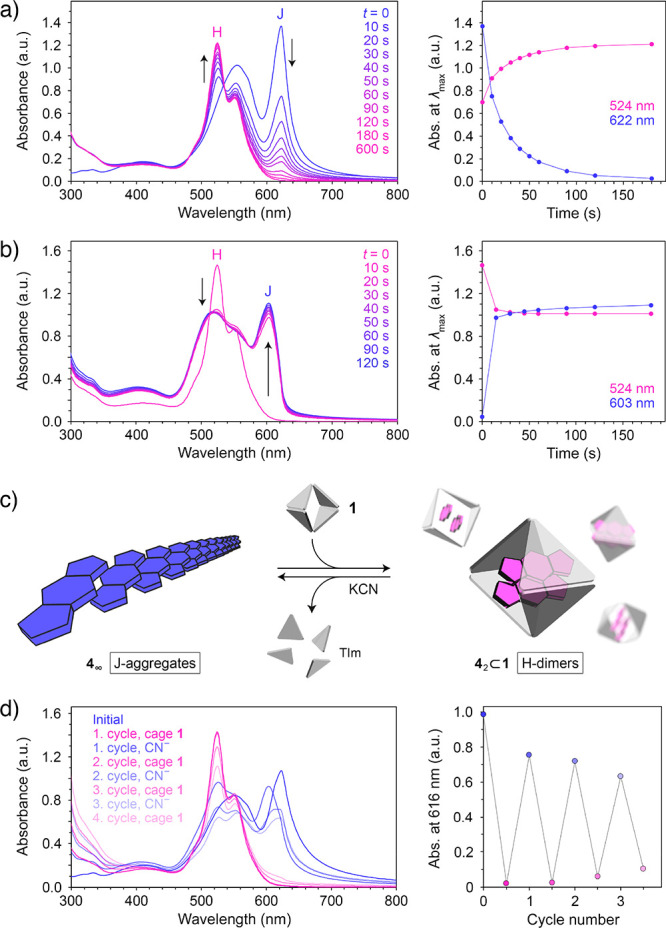Figure 5.

(a) Changes in the UV–vis absorption spectra of an aqueous suspension of J-aggregates of 4 induced by addition of 1.0 equiv of cage 1 (left), and changes in absorption at the wavelength of the maximum absorption of J-aggregates (here, 622 nm) and H-dimers (524 nm) (right). (b) Changes in the UV–vis absorption spectra of an aqueous solution of 42⊂1 induced by addition of 1.0 equiv of KCN (per Pd2+) (left), and changes in absorption at the wavelength of the maximum absorption of J-aggregates (here, 603 nm) and H-dimer (524 nm) (right). (c) Schematic representation of the reversible transformation between the J-aggregates and the H-dimers of 4. (d) Reversible changes in the UV–vis absorption spectra accompanying an alternating addition of cage 1 (0.7 equiv with respect to 4) and KCN (5.14 equiv per cage = 0.86 equiv with respect to Pd2+) (left), and changes in absorption due to J-aggregates over three cycles (note that the wavelength of the maximum absorption of the J-aggregates of 4 fluctuates in the 603–625 nm range depending on the degree of aggregation; thus, we followed the absorbance at a fixed wavelength within this range; 616 nm).
